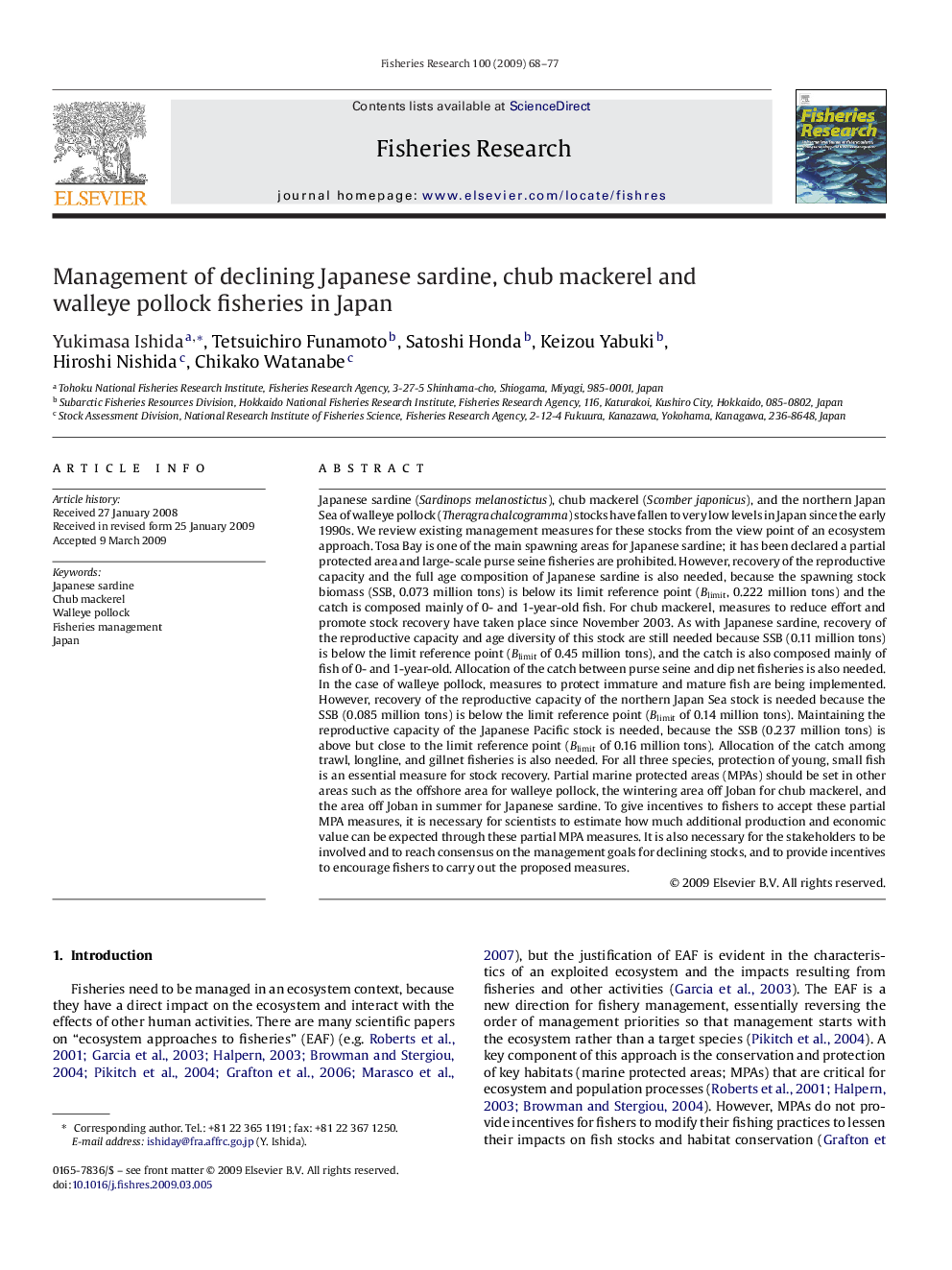| Article ID | Journal | Published Year | Pages | File Type |
|---|---|---|---|---|
| 4544103 | Fisheries Research | 2009 | 10 Pages |
Japanese sardine (Sardinops melanostictus), chub mackerel (Scomber japonicus), and the northern Japan Sea of walleye pollock (Theragra chalcogramma) stocks have fallen to very low levels in Japan since the early 1990s. We review existing management measures for these stocks from the view point of an ecosystem approach. Tosa Bay is one of the main spawning areas for Japanese sardine; it has been declared a partial protected area and large-scale purse seine fisheries are prohibited. However, recovery of the reproductive capacity and the full age composition of Japanese sardine is also needed, because the spawning stock biomass (SSB, 0.073 million tons) is below its limit reference point (Blimit, 0.222 million tons) and the catch is composed mainly of 0- and 1-year-old fish. For chub mackerel, measures to reduce effort and promote stock recovery have taken place since November 2003. As with Japanese sardine, recovery of the reproductive capacity and age diversity of this stock are still needed because SSB (0.11 million tons) is below the limit reference point (Blimit of 0.45 million tons), and the catch is also composed mainly of fish of 0- and 1-year-old. Allocation of the catch between purse seine and dip net fisheries is also needed. In the case of walleye pollock, measures to protect immature and mature fish are being implemented. However, recovery of the reproductive capacity of the northern Japan Sea stock is needed because the SSB (0.085 million tons) is below the limit reference point (Blimit of 0.14 million tons). Maintaining the reproductive capacity of the Japanese Pacific stock is needed, because the SSB (0.237 million tons) is above but close to the limit reference point (Blimit of 0.16 million tons). Allocation of the catch among trawl, longline, and gillnet fisheries is also needed. For all three species, protection of young, small fish is an essential measure for stock recovery. Partial marine protected areas (MPAs) should be set in other areas such as the offshore area for walleye pollock, the wintering area off Joban for chub mackerel, and the area off Joban in summer for Japanese sardine. To give incentives to fishers to accept these partial MPA measures, it is necessary for scientists to estimate how much additional production and economic value can be expected through these partial MPA measures. It is also necessary for the stakeholders to be involved and to reach consensus on the management goals for declining stocks, and to provide incentives to encourage fishers to carry out the proposed measures.
